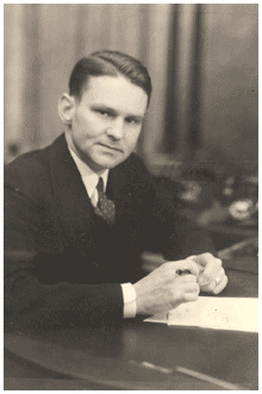Melvin Purvis (Melvin Horace Purvis)

Melvin Purvis was born in Timmonsville, South Carolina, to Melvin Horace Purvis, Sr. (1869–1938), a tobacco farmer and businessman, and Janie Elizabeth (née Mims, 1874–1927) as the fifth of eight siblings. Purvis was a well-educated man, and known to be a crack shot.[4] He received his law degree from the University of South Carolina School of Law and had a brief career as a lawyer. Melvin Purvis was a member of the Kappa Alpha Order while attending South Carolina. He joined the FBI in 1927 and headed the Division of Investigation offices in Birmingham, Oklahoma City, and Cincinnati. In 1932, he was placed in charge of the Chicago office by Bureau of Investigation Director J. Edgar Hoover. Purvis captured more public enemies than any other agent in FBI history, a record that still stands. Melvin Purvis led the manhunts that tracked outlaws Baby Face Nelson and Pretty Boy Floyd, and most famously John Dillinger, which ended in Chicago on July 22, 1934. However, after Purvis became a media figure for this feat, Hoover claimed that Purvis had been demoted and agent Samuel P. Cowley had been put in charge of the Dillinger case. Cowley was later shot by Baby Face Nelson, and Purvis visited him in the hospital shortly before he died. Purvis was praised for his actions. He reportedly incurred the wrath of Hoover, who had previously supported him, as Purvis sought and achieved publicity for his own role, overshadowing Hoover and the rest of the FBI. In a 2005 book co-authored by Purvis’ son Alston, Hoover is portrayed as jealous of the attention given to Purvis after Dillinger was killed.
At least one of Melvin Purvis’ official accounts of his exploits was later called into question. Purvis’ story of the death of Pretty Boy Floyd indicated that Purvis and his agents had killed him with no assistance from local law enforcement. This was later disputed by Chester Smith, an officer with the East Liverpool, Ohio police (Hoover would later state Smith had shot Floyd first). Officer Smith said that Purvis and his agents never fired until after Purvis had attempted to question Floyd. After Floyd responded with curses, Purvis ordered Agent Herman “Ed” Hollis to shoot Floyd, who was lying wounded on the ground. This claim was discounted later by retired FBI Agent Winfred E. Hopton, who wrote in a 1976 letter to TIME that local law enforcement, including Captain Smith, weren’t even present until after Floyd had died. Of course, this version conflicts with the one from local authorities which has Smith initially wounding Floyd. Neither claim has been clearly proven. Purvis resigned from the FBI in 1935 and afterward practiced law. In 1937, he became engaged to actress Janice Jarratt, but they never married. He later married Marie Rosanne Willcox, and they had three sons. In 1936, Purvis published a memoir of his years as an investigator with the Bureau, entitled American Agent.
Melvin Purvis served in the United States Army as an intelligence officer during World War II, reaching the rank of colonel. He assisted with compiling evidence against Nazi leaders in the Nuremberg trials. On February 29, 1960, while at his home in Florence, South Carolina, Purvis died from a gunshot wound to the head fired from the pistol given to him by fellow agents when he resigned from the FBI. The FBI investigated his death and declared it a suicide, although the official coroner’s report did not label the cause of death as such. A later investigation suggested that Purvis may have shot himself accidentally while trying to extract a tracer bullet jammed in the pistol. He was 56 years old.
Born
- October, 24, 1903
- USA
- Timmonsville, South Carolina
Died
- February, 29, 1960
- USA
- Florence, South Carolina
Cause of Death
- gunshot wound
Cemetery
- Mount Hope Cemetery
- Florence, South Carolina
- USA



